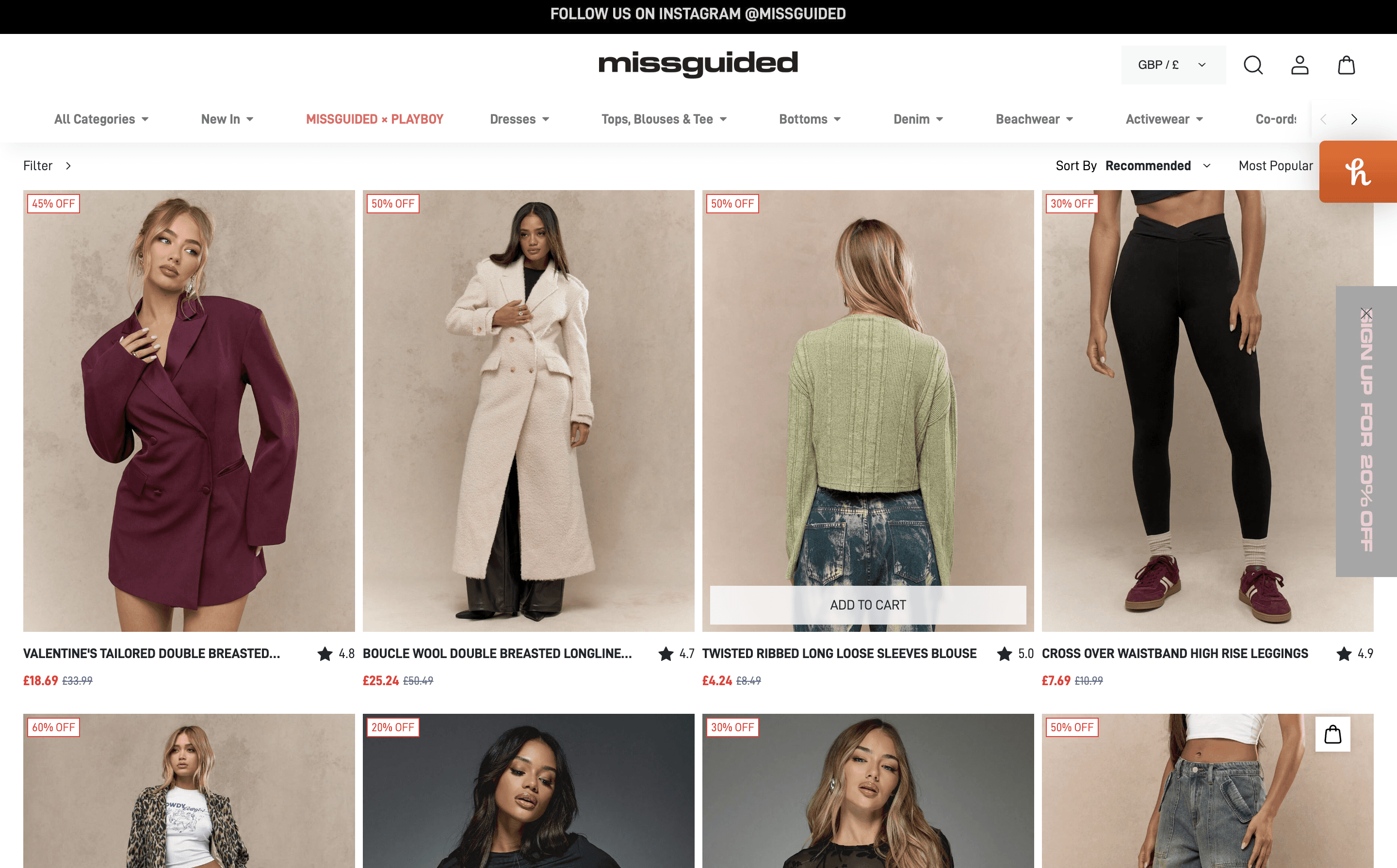January 8, 2025
Product Listing: 20 Tips for High-Converting Pages in 2025
Try Creating Your Own Product Photos For Free

Crafting product listing pages that convert visitors into customers is a fine art and science. To thrive in the competitive e-commerce landscape of 2025, businesses need to optimize their pages for usability, trustworthiness, and engagement. Here are 20 tips to help you create high-converting product listing pages, along with examples from companies that excel in these areas.
1. Optimize for Mobile Usability
Mobile shoppers continue to dominate online traffic. Ensure that your product pages are responsive, easy to navigate, and fast-loading on mobile devices. Example: ASOS offers an intuitive mobile browsing experience with swipe-friendly filters.
2. Use Clear and High-Quality Product Images
Visual appeal is crucial. Showcase products with multiple angles, zoom capabilities, and lifestyle shots to provide a comprehensive view. Example: Wayfair excels in presenting 3D product views and in-context images.
3. Highlight Key Features Above the Fold
Make essential details like price, reviews, and key benefits visible immediately to grab attention. Example: Apple’s product listings focus on simplicity, highlighting key specs at a glance.
4. Offer Advanced Filtering Options
Enable users to refine their search results with filters like price, size, color, and category. Example: Zalando includes smart filters, such as eco-conscious options, for tailored shopping experiences.
5. Add Trust Signals
Incorporate badges like "Best Seller," "Limited Stock," or "Verified Reviews" to boost credibility. Example: Amazon prominently features best-seller badges and customer ratings.
6. Use Urgency and Scarcity Tactics
Highlight limited-time offers or low-stock notifications to encourage faster decision-making. Example: Booking.com emphasizes urgency with phrases like "Only 2 rooms left!"
7. Leverage User Reviews and Ratings
Social proof drives conversions. Display average ratings, customer testimonials, and photos. Example: Glossier integrates detailed customer reviews alongside product descriptions.
8. Incorporate Video Content
Videos that show the product in use can significantly boost engagement and understanding. Example: Nike uses short videos to demonstrate their gear in action.
9. Make Use of AI-Powered Recommendations
Provide personalized recommendations based on user behavior to increase upselling opportunities. Example: Netflix’s suggestion algorithms inspire similar practices for e-commerce personalization.
10. Offer Free Shipping Prominently
Showcase free shipping options clearly, as this can make or break a purchase decision. Example: Target highlights free shipping thresholds at the top of their pages.
11. Simplify Navigation
Use breadcrumbs, intuitive menus, and a clear layout to make browsing seamless. Example: IKEA’s navigation makes it easy to find products even in a massive catalog.
12. Use Search Optimization
Ensure your internal search bar delivers accurate results and suggests relevant items as users type. Example: Etsy’s smart search predicts what customers are looking for with high accuracy.
13. Prioritize Page Load Speed
Slow pages lead to high bounce rates. Optimize images and server response times to enhance performance. Example: Google prioritizes speed in its services and tools like PageSpeed Insights.
14. Include Clear Call-to-Action Buttons
Ensure "Add to Cart" or "Buy Now" buttons are prominent, contrasting, and actionable. Example: Shopify merchants benefit from simple, high-contrast CTAs in their templates.
15. Provide Easy Access to Customer Support
Offer live chat or quick links to FAQs and support to address concerns instantly. Example: Chewy’s 24/7 chat support is a standout feature for pet parents.
16. Emphasize Product Availability
Clearly indicate stock levels and expected delivery times. Example: Zara’s “Check in Store” feature helps users find local availability.
17. Offer Wishlist Functionality
Allow users to save products for later, enhancing user engagement and return visits. Example: Sephora’s wishlist feature keeps users coming back to finalize purchases.
18. Focus on Accessibility
Design pages that are usable for all, including those with disabilities. Use proper text contrast, alt text for images, and keyboard-friendly navigation. Example: Microsoft’s inclusive design practices set a benchmark for accessibility.
19. Implement Social Sharing Buttons
Encourage users to share products on social media to increase reach and potential sales. Example: Anthropologie integrates subtle yet effective sharing options.
20. Test and Iterate Continuously
A/B test page layouts, button colors, and messaging to find what resonates best with your audience. Example: Airbnb is known for its rigorous A/B testing to optimize user experience.
By implementing these strategies, you can build product listing pages that not only attract visitors but also drive them to convert. Take inspiration from these industry leaders, but tailor these practices to fit your brand identity and customer preferences.
——
Our mission at AI Education For All is to empower diverse underrepresented communities with AI Education. We hope to write guides like this that can inform you on the latest AI technology to use at your disposal. If you find resources like this useful, please stay in touch and share your email! We will keep you updated on the latest volunteer projects, resources and ways you can support.
Try Creating Your Own Product Photos For Free
Ai Education For All
© 2024
